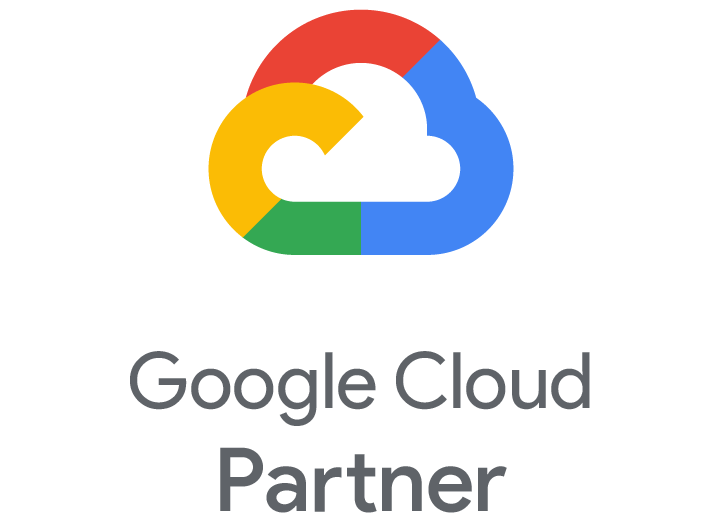Here’s the truth:
The global hotel industry is competitive and dominated by Hotel Chains. The hotels that made up the chain are usually located in different locations.
While the perspective of this article is a chain of hotels, the information herein applies to all kinds of chain businesses that have multiple locations. We are just using the hotel chain as an illustrative example.
Each hotel chain may oversee its administration, marketing, and promotion while maintaining the culture of the brand.
Hotel digital marketing is gaining grounds. Hotel SEO, in particular is becoming an indispensable strategy for increasing search visibility. And it’s working.
The Shalimar Hotels in India, Lemon Tree Hotels, and Renaissance Woodbridge Hotels in United States are utilizing Hotel SEO to drive local customers every day.
One of the ways to ensure that this hotel chain with multiple locations shows up in the Google map pack is through SEO.
SEO is changing and marketing a hotel chain, in particular, can be quite tricky. More so, it takes a unique approach to rank a hotel chain in the Google map pack.
For a hotel chain with multiple locations, a local presence is a key to its success. You can’t ignore local SEO. Here’s why:
According to HubSpot’s research, “86% of people look for businesses information on Google Maps.”

Although there are several online marketing strategies that are effective for promoting a hotel chain online, such as investing in PPC ads, leveraging influencers to create massive awareness, outsourcing content marketing to drive traffic and and leads, and the list goes on.
However, investing in local SEO is the most reliable way to rank a hotel chain. When properly executed, ranking in the local map pack can help the hotel chain to attract foot traffic, local customers, and grow sales.
If you’ve been searching for how to boost your hotel’s engagement in your city, state, or country using local SEO, I wrote this in-depth guide with you in mind.
Local SEO
Did you know that 46% of all searches on Google are from local consumers?
As exciting as this might sound for hotel marketers, it’s sad to know that 56% of all local businesses are neglecting search engines. In fact, the majority of them aren’t optimizing their Google My Business listing.

If you aren’t aware, optimizing your GMB (Google My Business) listing is the foundation of local SEO. The goal of ranking your hotel chain in Google Map Pack cannot be achieved without this.
While getting your Google My Business listing is an awesome place to begin, there’s a lot more to local SEO as we will see.
What is Local SEO?
Let’s align it to hotels for better clarity:
Local SEO is the process of optimizing your hotel’s presence online in order to attract customers from relevant local searches. The majority of these searches happen on Google.
The last sentence is a vital one- Google is a key player.
When people are looking to reserve a hotel online or walk into a hotel, they would likely search with any of these keywords in Google:
- best hotels near me
- Hotels in + your city (e.g., hotels in San Diego)
- cheap hotels near me
- affordable hotels near airport
And so on…
Google has about 69.03% of the U.S. search market share as at September 2018; this should give you a clue as to where the focus of your hotel chain local SEO should be — because it means most potential customers who want a hotel to lodge are using Google for searches.
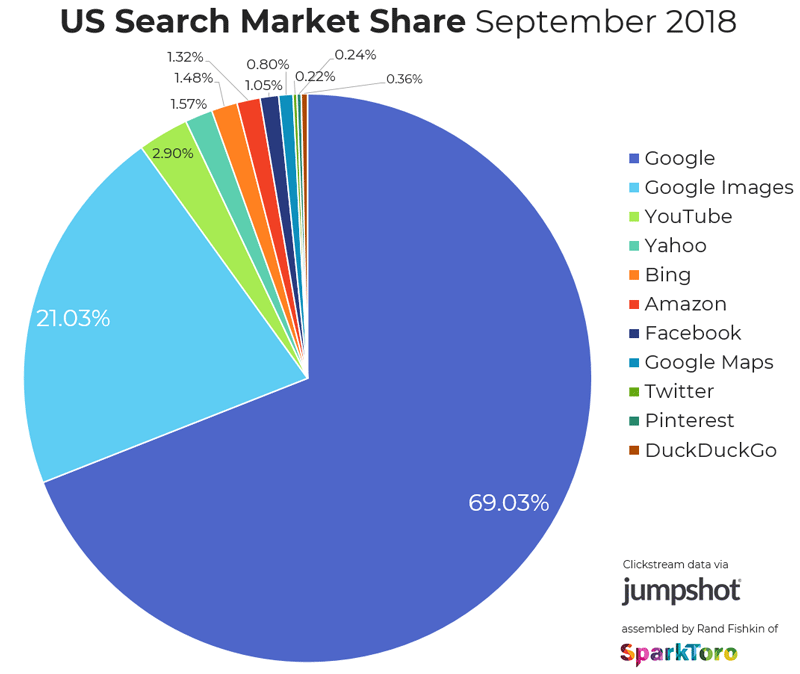
Google Local Map Pack Vs. Organic Results
To give you an example of a business with multiple locations that are showing up in the Google map pack, it’ll give you a better understanding of how results in the map pack differ from the typical organic results.
Here are search results for “Walmart near me”.
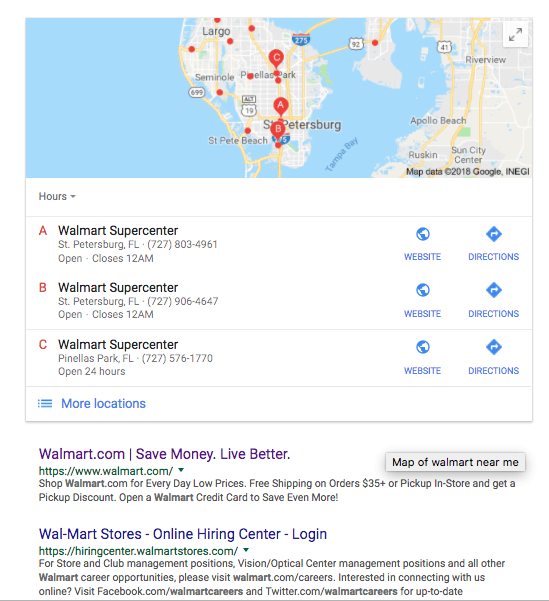
If you look closely in the example above, you’ll see that WalMart is ranking in the map pack for two different locations in Florida.
I’m sure that’s exactly what you want to do with a hotel chain? You want all the hotels ‘near’ the customer to show up whenever they search for “hotels near me.”
So what are these map pack results?
Google Map Pack is a boxed area that is shown on the first page of any search after a user conducts a local search searches. The map pack always displays the top 3 local business listings that are most relevant to the query.

Based on a recent survey, 33% of clicks were made on local “map pack” results and 40% made on organic results.
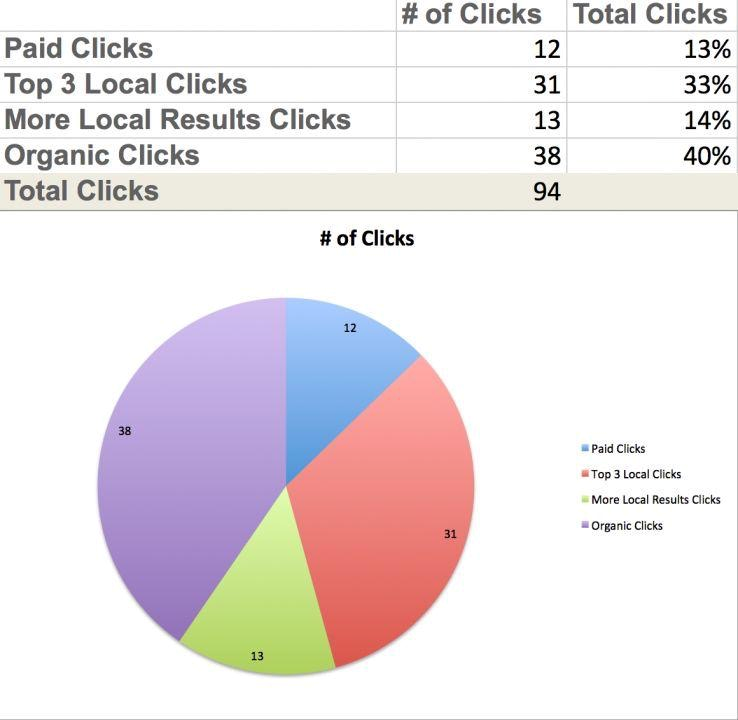
The lesson here:
It’s necessary to rank a hotel chain on the map pack as well as the organic listings. That’s the best way to maximize online visibility in the search.
Don’t forget, though, that local searches carried out on Google are performed from varying apps and devices. So, it’s important that your hotel website is mobile responsive so that it displays well on different devices.
Here’s why this is important:
A study by BrightLocal shows that 61% of web users using mobile devices are more likely to contact your hotel in their city or state if you have a mobile-friendly site.
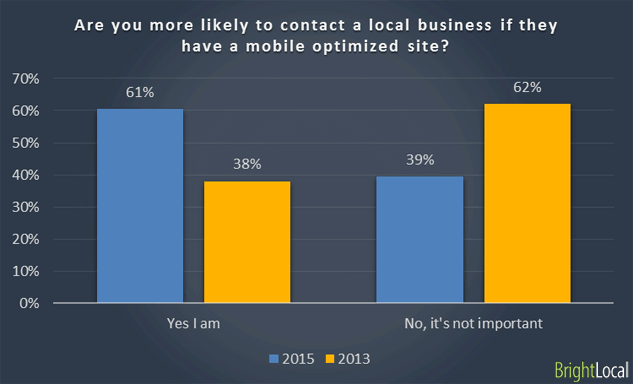
Furthermore, regardless of where your hotel ranks, if your site isn’t appealing to the vast majority of people using mobile devices, they would be pissed off.
Here’s what you should do now:
Make a note of your hotels’ current and past (if applicable) names, phone numbers, websites, and addresses. This will be quite useful later to ensure consistency.
That said, let’s discuss the proven ways to ‘actually’ rank your hotel chain in Google Map Pack:
-
Keyword Research
Let’s assume that you run a hotel called Mountain View. You would definitely want to come up for searches like:
- Hotels near me
- Mountain View
- Mountain View Hotel
- Mountain View Hotel in Georgia
- Mountain View phone number”
- Best time for Mountain View Booking
And so on…
You can also use KeywordTool.io, Ahrefs, or SEMrush to find relevant keywords for your pages.
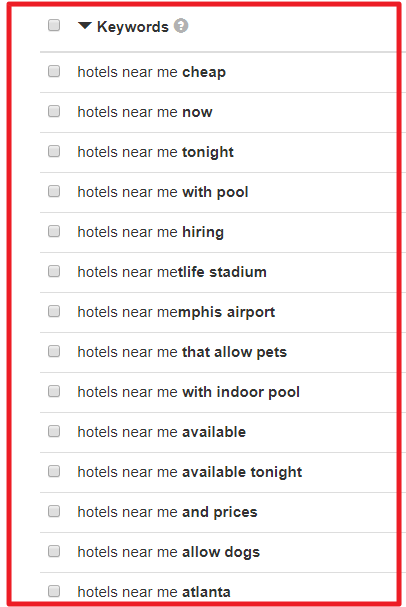
These are not traditional searches, because Google shows this information in a card-like format in the search results pages.
Here’s an example below of the phone number of a local business. Google pulls such results from information added by the business in Google My Business listing.
We’ll see more about this in the next section.
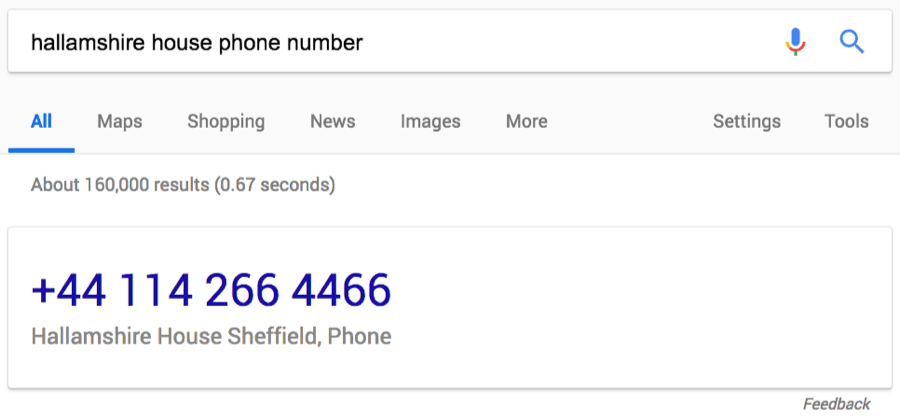
So, what about the “regular” keywords? How do you know what they are and which ones your site should be optimized for?
Here are some tips:
i) Understand your Service in Locations or SILs
It’s easy to find local keywords to target in a hotel website. For a lot of businesses, especially hotels, in this case, the primary keywords you should focus on are quite obvious.
Let’s say the hotel’s main location is in Los Angeles, how would you expect people to search for it?
They’d probably type in any of these search terms in Google search box:
“Hotels in Los Angeles”
“Best Hotel in Los Angeles”
“Hotels near me”
Can you see the format? That’s service in location.
It’s the service you offer and where you offer it. It’s easy — simply create a list of your service and merge it with the locations where the service is available, and in our case, your service is your hotel chain and the locations are their different addresses.
The combination of the two gives you potential keywords. Also, ensure that you list out variations of the service your hotel provides as well.
For example “Hotel in Los Angeles”,” Vacation spots in Los Angeles”, “Affordable Hotels in Los Angeles”, etc.
If one of the hotels in your chain is based in a small town, you may want to change your location modifier to a bigger, nearby city — assuming you’re looking for search terms with a decent search volume. Why is that?
If your hotel is in a really small town, the searches per month will be really low for you to get accurate search volume data.
Getting the estimated search volume of specific keywords will help you know the demand for the keywords. Simply do these: change the location of the small city to a bigger one that’s close by.
Then do the following:
(Population of small town/population of the larger nearby city) × Search volume of the larger nearby city.
You can easily get the population of any city by a Google search.
Let’s do some reverse engineering for a keyword that has an average of 900 monthly searches.
(518,090/8,136,000) × 900 = 57
57 is the average search volume of the keyword in the small town.
Most times, the true search volume would be just a little bit above the estimate search volume. But using the same larger nearby city in all your calculations for any keyword will help you get a feeling of the search volumes for that search term, which is the point of the matter.
ii) Find Keywords Ideas from Craigslist
Craigslist can easily be described as a goldmine when it relates to locating quality local keywords. Simply visit their services section, choose your location and type your keyword like “rentals in Idaho” below.
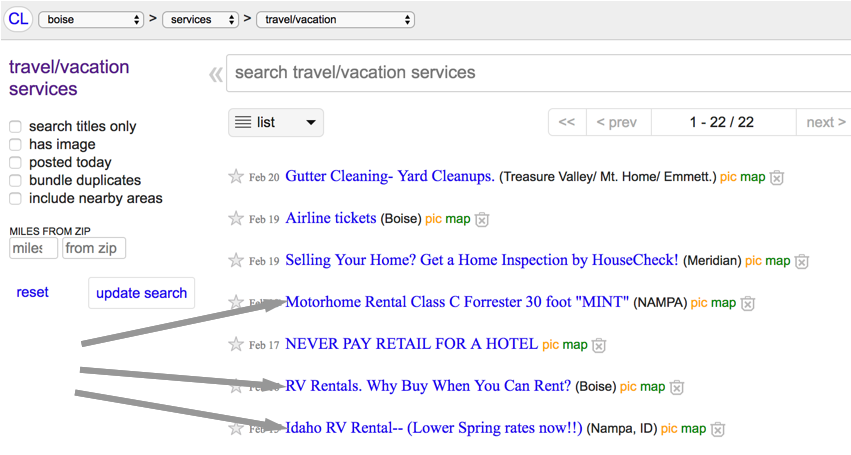
You’ll see a list of results and then you can pick some of them for your page optimization. If you’re in the UK, Gumtree would give you insights as to the best search terms to begin with.
iii) Google Autocomplete
This is quite easy; all you need to do is type in your primary keyword and take note of the suggested list of searches.
Let’s do it for “Dublin hotels”.
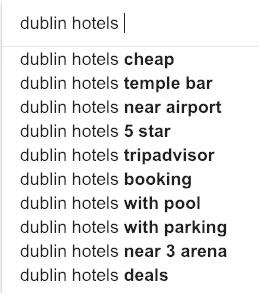
Most times, you’ll see suggestions that you didn’t even consider in your initial brainstorming session. Just take note of the relevant ones. After this simply reiterate for other locations of your hotel chain.
iv) What do your Competitors Rank for?
Google has evolved over the years. With lots of data about searcher intent, which has made it possible for a top result to equally rank for up to 900 relevant keyword variations at the same time.
This offers a wide scope of opportunities, all you need to do is to use a tool like Ahrefs’ Site Explorer or SEMrush, and you’ll quickly see your competitor’s organic keywords report and see all the terms they rank for in top 10.
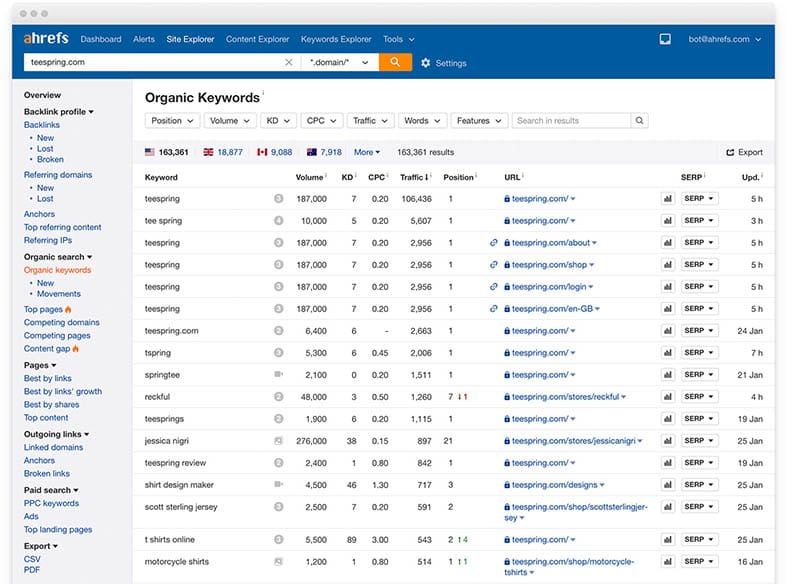
By looking at these keywords, you will uncover various other relevant long-tail keywords.
Now here’s how to maximize this, do it for other hotels like yours in bigger cities. This will reveal keywords that could be relevant in your location also, which local competitors have missed and most times, there are so many of them.
-
Google My Business
Optimizing and claiming your Google My Business listing is definitely the most vital aspect of local SEO. I did say that before, but I think it’s worth repeating.
However, there are some confusing steps that could trip you up; this is why the following guide is essential.
What’s Google My Business?
Google My Business is an easy-to-use free tool for organizations and businesses of all sizes to effectively manage their web presence on Google, inclusive of Maps and Search.
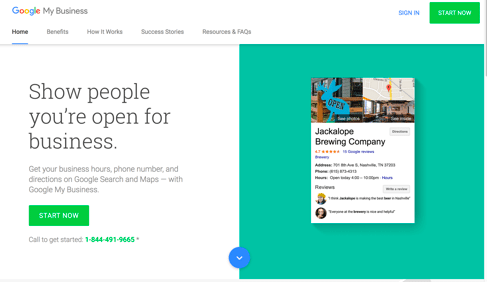
A recent Moz’s survey states that Google My Business is among the top factors for ranking in both local organic results and Map Pack.
Below are the Steps to set up your hotel chain in Google My Business.
Step 1 – Type the Name of your Hotel Chain
Google will ask you for your business name. Enter the name of your Hotel chain or brand.

You’ll be presented with two choices:
- Create a new business
- Claim an existing business
Just start typing and Google will conduct a search to see if your business is in the system. Click “create a business with this name” if Google doesn’t have the name already.
This is a delicate aspect, don’t try to play the keywords game here. Input only your business or hotel name, and that alone. For example, if your hotel chain is called Skyblue Hotels, don’t input Skyblue Hotel in Los Angeles, simply type Skyblue Hotels as your business name.
Step 2 – Input your Address
In this step, Google will require your hotel address. For hotels with multiple locations, this is quite the problem; each hotel in your chain has unique contact details and address.
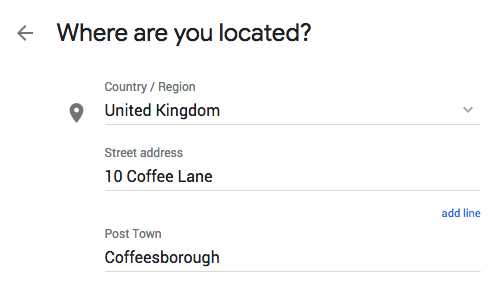
So how do you ensure that you aren’t penalized by Google for conflicting information on your Google My Business (GMB) profile?
Luckily enough for chain businesses, Google is aware of this dilemma and permits business owners to choose multi-location listings.
However, in order for Google to verify your hotel as such, some conditions need to be met. Your hotel must have a minimum of 10 locations and your hotel shouldn’t be “run” from your house address if that’s even possible.
A great example is Walmart, a business chain with numerous locations showing up for “Walmart near me”.
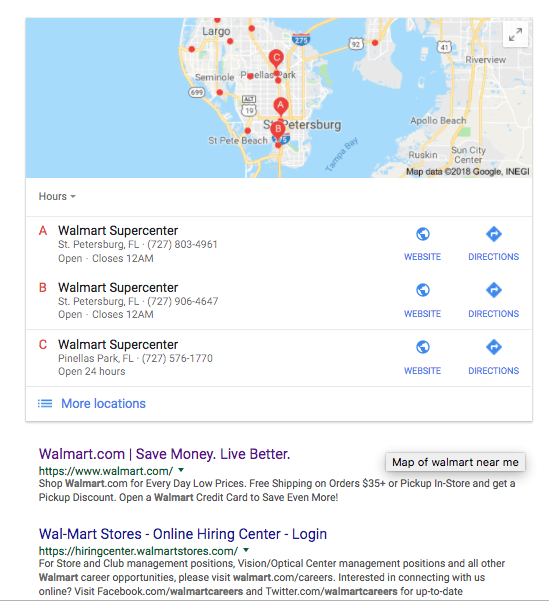
At this stage, you will be shown a map having a location pin. You can move or drag this around to pinpoint your hotel location.

Most of the time, you can trust Google in the location it shows you but if the pin seems to be wrongly placed, you can move it to the right location.
Step 3 – Pick a Category
Google only permits you to pick one category when you are setting up your GMB profile. They offer a ton of advice on how to pick the correct category here.
Here is some advice that will be suitable for most people:
Pick categories that finish the phrase; “This business is a” instead of “This business has a.” The aim is for your hotel to be described in totality rather than listing the services it offers or its amenities and features.
Just write on what your business is, in the category box and Google will begin making category suggestions for you.

Pick the one that’s most relevant and click “Next.”
To get more ideas on category choice. you can search for “hotel [your location]” in Google Maps and it will show you your competitor’s primary category. You can then use that category.
Step 4 – Input your Phone Number and Website
This step is pretty straightforward; all you need to do is type in your hotel’s phone number and website URL. Remember that consistency matters. Don’t try to be clever. Be clear instead.
Step 5 – Verify the Listing
Before your hotel’s Google My Business listing goes live, you’ll be required to verify it. This is usually done via postcard or phone; just follow Google’s instructions to verify.
Step 6 – Optimize the Listing
After you’ve claimed your multi-location hotel chain on Google My Business, the next thing to do is the optimization of your listing.
The hotels Google My Business listing should be optimized some more by adding more categories, listing any specific services you offer, adding relevant amenities your hotel offers, list prices, and so on.
However, before going ahead, you need to first understand the factors that influence your chances of showing up in the local Map Pack.
Unknown to local businesses, the most vital factor is maintaining accuracy on all platforms.
What this means is ensuring that every single piece of information about your hotel chain is consistent across all websites it appears on including Yelp, Facebook, Yellow Pages, Apple Maps, Hotfrog, and your hotel’s websites.
Google bots go through all these pages. As these bots encounter information relating to your business; it will compare them to your Google My Business listing to ascertain their validity.
The presence of inconsistency will show a red flag about the inaccuracies of your information — which will lead to your GMB listing getting penalized in the rankings.
How do you maintain accuracy in all your listings?
- Claim and verify your various Hotel locations using one, GMB account. Ensure that you get rid of duplicate accounts or listings that may have been made by employees in other locations.
- Make sure your hotel address, name and phone number (NAP) is consistent wherever they appear. The best way to do this is by simply copying and pasting from your Google My Business listing.
- Get your business locator optimized on your hotel chain main website so it can be crawled by Google. Google sees your website as the most reliable source of data as regards your company, so making sure Google has access to it is important.
- Use a mini-site for every one of your hotel’s locations. This will give every location a unique reference and specific about page, each one with a precise NAP that Googlebot can crawl.
-
Local Citations: Getting Signals for Your NAP
Citations are various online mentions of your hotel chain, which displays your hotel name, phone numbers and address – which is collectively known as NAP (Name, Address, Phone).
There are two major kinds of citations: Structured and Unstructured. Here’s a structured citation example:
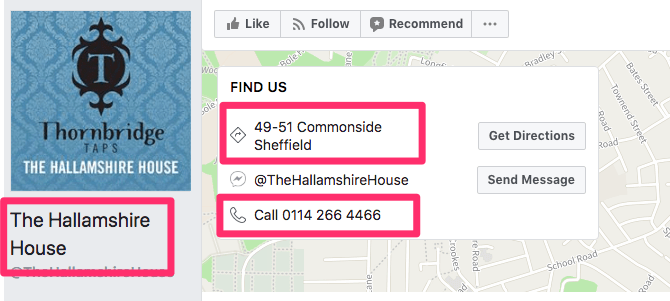
The example above is a NAP structured citation for Hallamshire House from the company’s Facebook page.
Structured citations are basically those that the NAP information is written in a structured manner. These are usually seen on social profiles, business directories, etc.
Below is an example of unstructured citation of the same company.
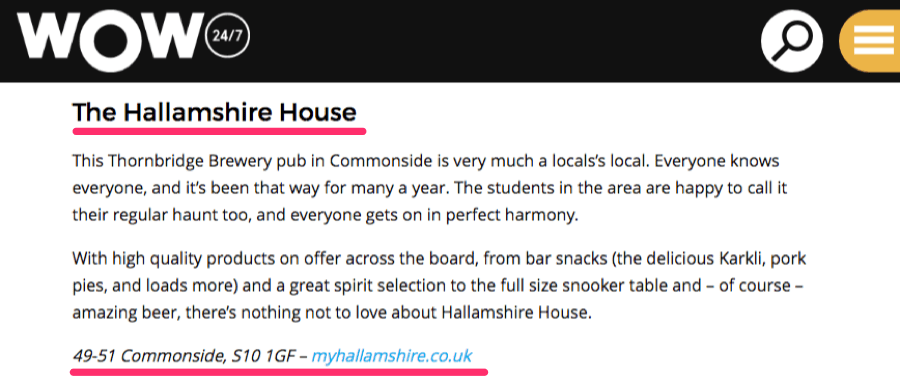
Hallamshire House is cited in a blog post. Unstructured citations are when your company’s name is mentioned in an unstructured format. These are usually seen in newspaper websites, business blogs or blog posts.
Why NAP Citations are Necessary
According to research by Moz, citation signals are part of the most vital ranking factors in local SEO. This relates to both Google’s Map Pack and normal organic search results.
It’s probably because consistent and accurate NAP information across the internet acts as an additional verification for Google about your hotels listed on Google My Business.
Inconsistent NAP details across the net, on the other hand, only confuses, misdirects and misleads both potential customers and Google. This leads to the terrible user experience which Google dislikes and desires to completely eliminate.
Google is certainly not the only place people would try to locate a hotel. Local customers would also search through directories, Facebook, etc. Having a consistent NAP listed on various sites, will let potential customers easily find your hotels, which translates into more revenue.
When it comes to getting local citations, make sure you meet these two requirements:
- Ensure your hotel citations are consistent
- Ensure that the citations are accurate
i) Carry out a Citation Audit
Most businesses would already have citations. But most times, there would at least be some incomplete or incorrect ones. Some would have your correct hotel’s name and address but a wrong phone number.
Others will have the right phone number and business name but a wrong address, with some having incomplete information; an address, business name with no contact number.
For example, if on one of your hotel’s Facebook page the number is different from that of your Yelp directory listing, that’s inconsistency.
Below is a screenshot example of inaccurate NAP details across the internet and should be fixed.
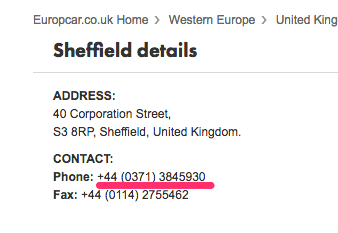
On Yelp it’s another

Now even if these two separate numbers do work, for NAP citation purposes, it would be more profitable to pick a single number and stick with it. It will make sure that on all structured NAP citations there is consistency.
Here are some ways to can find incomplete, duplicate, and inconsistent NAP citations:
a) Moz Local
Moz will check the major data aggregators of your location and reveal all inconsistent, duplicate and incomplete listings.
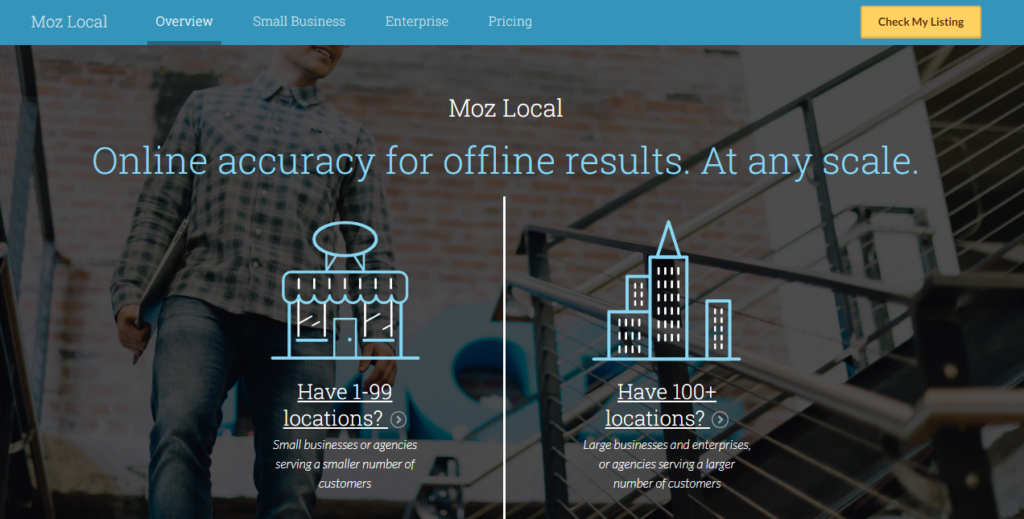
Check an example below of inconsistency. The culprit is the phone number, the number shown on their official website is different from the other one. In order to fix it, simply claim the listing and update.
b) Check the Major Suppliers/Aggregators
Smaller directories get your brands business NAP information from data suppliers/aggregators.
Here are some of the main ones:
- InfoUSA/Infogroup
- Acxiom
- Thomson Local
By checking your listing on the above sites, you can update hundreds of inaccurate/inconsistent NAP citations at a go.
Conclusion
Ranking on Google Map Pack through local SEO is one of the best things that could happen to your hotel chain.
Not only does it bring in more traffic to your site, but it also allows local customers to easily find relevant information about your hotel’s services and operations by a simple search.
Trust me, the number of local searches for “hotels near me” and other location-based keywords is big enough to have a huge impact on the success of your hotel chain.
Following the steps listed above will help you to attract local customers to your hotel services.
Just ensure proper data input, and optimization of your GMB listings, make sure your business citations are consistent and accurate across the web.
Most importantly, and always remember to find and target relevant keywords for your hotel chain brand location.
And if you use your main hotel chain website for marketing, then create location pages, these are separate, optimized landing pages for each hotel location. This alone can speed up your success at ranking a hotel chain in Google map pack.

